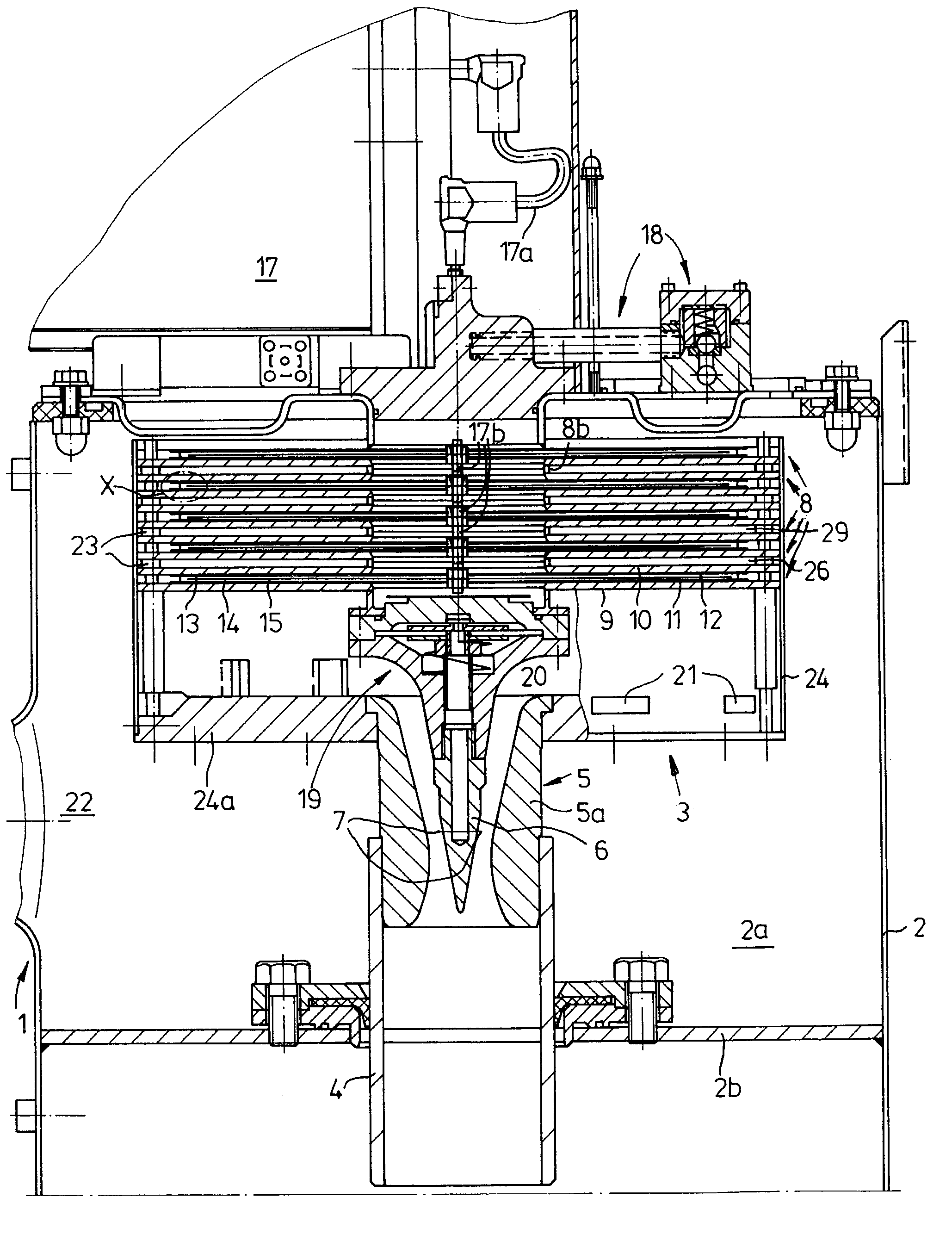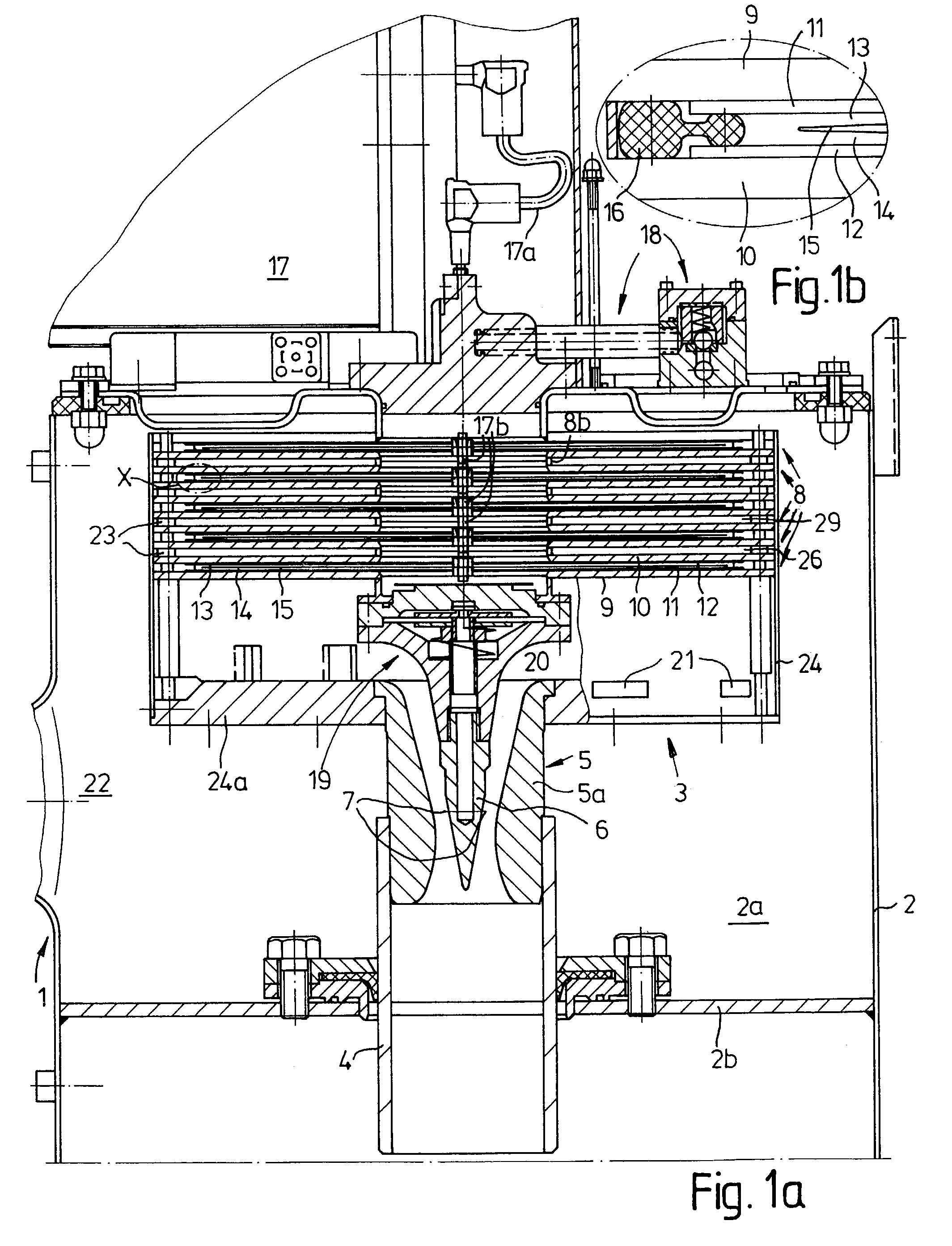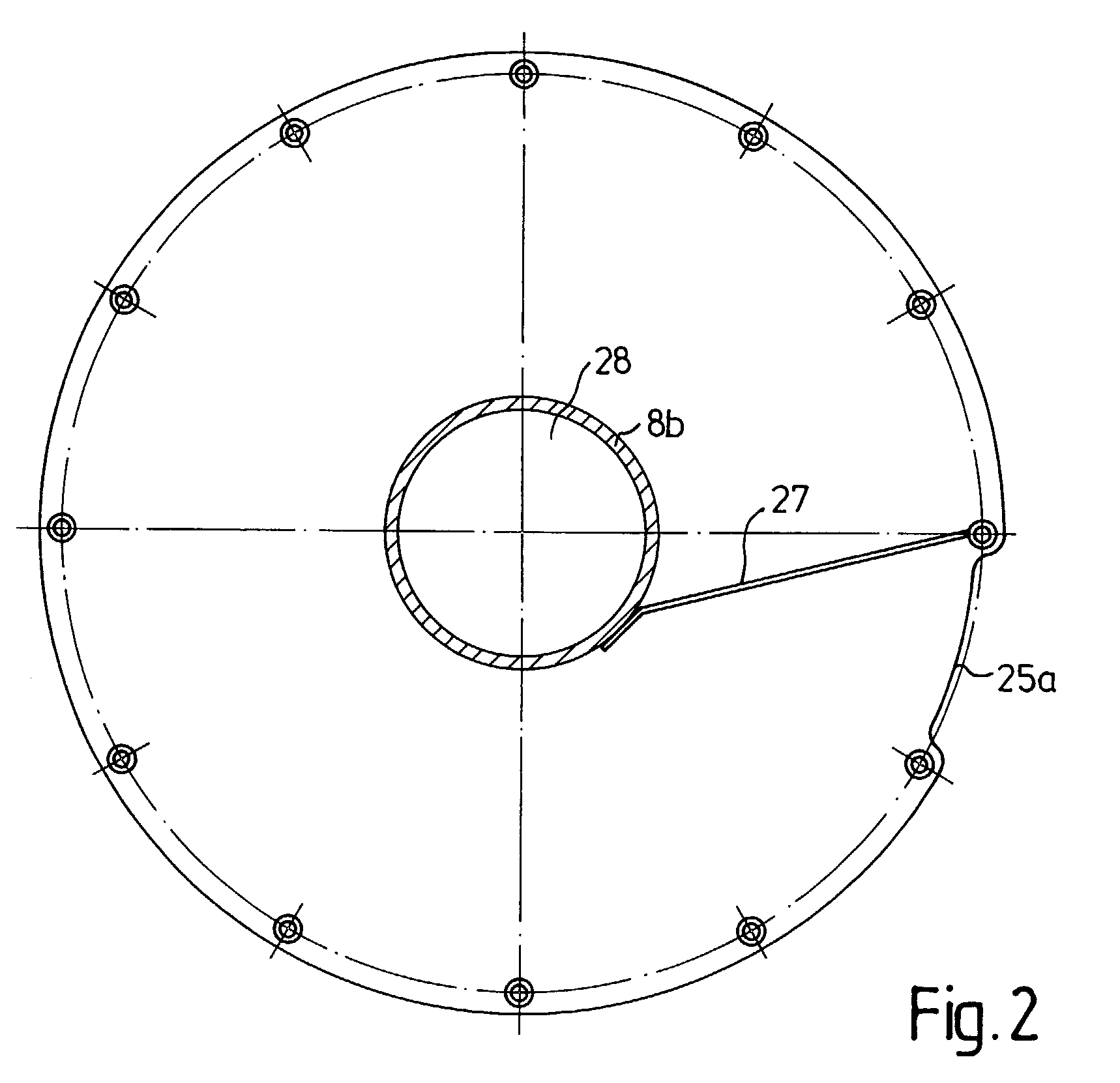Ozone generator
- Summary
- Abstract
- Description
- Claims
- Application Information
AI Technical Summary
Benefits of technology
Problems solved by technology
Method used
Image
Examples
Embodiment Construction
[0023]FIGS. 1a and 1b show an ozone oxidizer 1 having a process chamber housing 2 which is sealed with respect to the outside. An ozone generating unit 3 is situated in process chamber 2a of housing 2. A water feed pipe 4 is sealingly inserted in base 2b of housing 2. Water feed pipe 4 merges into a Venturi nozzle unit 5 mounted on the underside of ozone generating unit 3. Venturi nozzle unit 5 comprises a Venturi nozzle 5a, inside of which an injector element 6 having discharge outlets 7 is centrally situated. Injector element 6 is attached at separate locations to the underside of a stack of ozone generating elements 8 of ozone generating unit 3 by a valve arrangement 19. Water flowing in through water feed pipe 4 is led at high velocity past discharge outlets 7, from which gas having a specified proportion of ozone which has been formed in ozone generating elements 8 flows out.
[0024]Ozone generating elements 8 comprise two outer electrodes 9, 10 (see in particular FIG. 1b), along...
PUM
 Login to View More
Login to View More Abstract
Description
Claims
Application Information
 Login to View More
Login to View More - R&D
- Intellectual Property
- Life Sciences
- Materials
- Tech Scout
- Unparalleled Data Quality
- Higher Quality Content
- 60% Fewer Hallucinations
Browse by: Latest US Patents, China's latest patents, Technical Efficacy Thesaurus, Application Domain, Technology Topic, Popular Technical Reports.
© 2025 PatSnap. All rights reserved.Legal|Privacy policy|Modern Slavery Act Transparency Statement|Sitemap|About US| Contact US: help@patsnap.com



